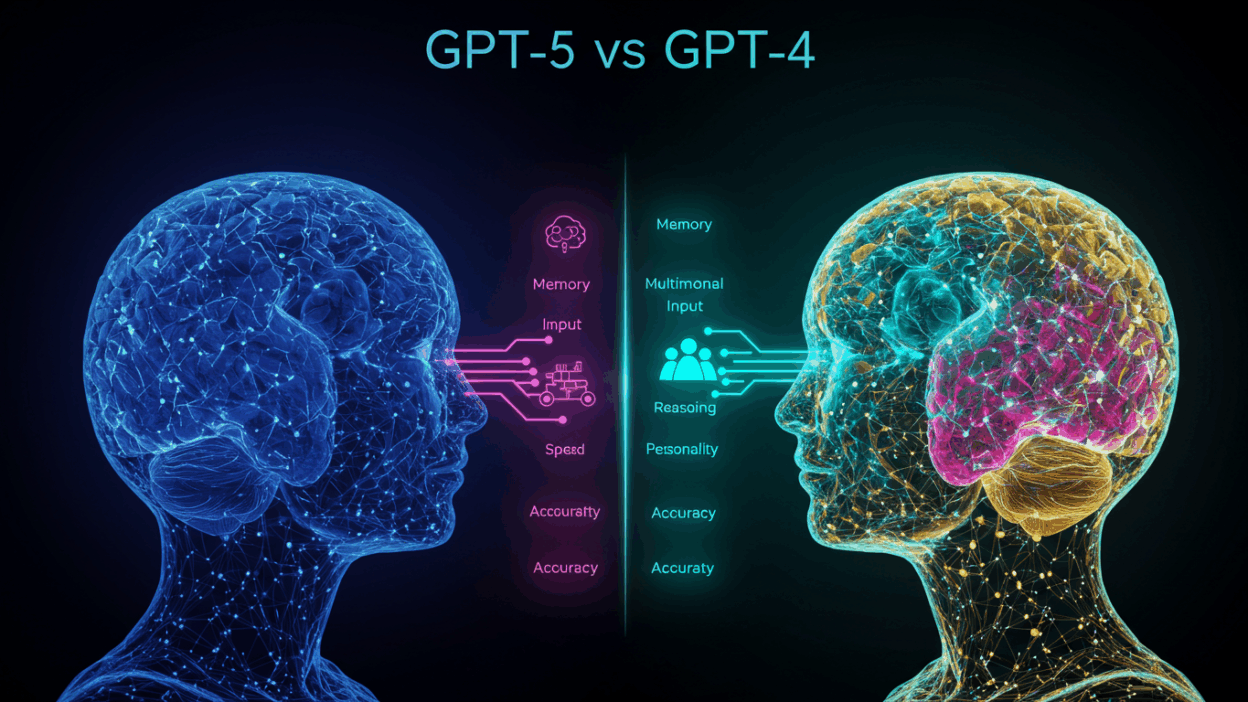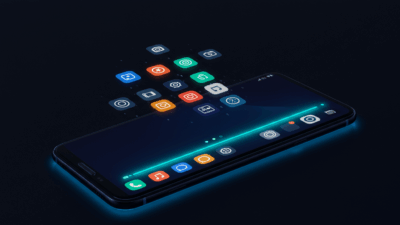How fast is AI really changing? In 2023, the launch of GPT-4 created a global sensation. It quickly became the go-to tool for developers, content creators, marketers, and everyday users. But now, in 2025, OpenAI is raising the stakes once more with GPT-5—a version that many are calling the most “human-like” AI yet.
This post will help you understand the core differences between GPT-5 and GPT-4, from performance and reasoning to real-world applications. We’ll show you exactly when and why you might want to choose one over the other.
1. The Key Difference: Context and Memory
The biggest change lies in the length of the context window, which is essentially the AI’s short-term memory.
- GPT-4: Came in two versions—8K and 32K tokens (roughly 6,000 to 24,000 words). With long texts, it could sometimes “forget” details from the beginning of a conversation.
- GPT-5: Expands this to a massive 128K tokens. This means you can feed it an entire book, hundreds of pages of documents, or days of chat history, and the AI will still maintain the full context.
💡 The Real-World Impact: If you work with long reports, write novels, or analyze large datasets, GPT-5 offers a far more seamless and coherent experience.
2. Reasoning: Not Just Answering, But Thinking
GPT-4 was already quite skilled at solving logical problems, but it could still make mistakes on multi-step tasks. GPT-5 has made significant improvements in this area:
- It better understands multi-step reasoning requirements.
- It solves complex math problems, strategic planning tasks, and data analysis with greater accuracy.
- It’s better at “fact-checking” itself before providing an answer, which helps to reduce “hallucinations.”
For example: If you ask it to “create a 3-month marketing plan based on sales data and industry trends,” GPT-5 won’t just list ideas; it will analyze the data, compare it to industry benchmarks, and propose specific, data-backed actions.
3. Multimodality: The Fusion of Text and Images
GPT-4 (GPT-4V) could see and understand images, but combining text and images in a single workflow was still limited. GPT-5 offers much deeper integration: you can provide a revenue chart, a product photo, or a technical diagram and then ask the AI to analyze and compare it with the text data you’ve entered.
💡 This is incredibly useful for:
- Financial Analysts: Viewing price charts and getting trend insights.
- Engineers: Reading circuit diagrams or technical drawings.
- Marketers: Analyzing a product image and getting tailored campaign suggestions.
4. Speed and Performance
One of the biggest complaints about GPT-4 was its response time when dealing with large queries. GPT-5 has been heavily optimized:
- It’s 30–50% faster when processing long contexts.
- It provides near-instant responses to short questions.
- It experiences fewer “bottlenecks” when processing large volumes of data.
5. Style and Personality Customization
GPT-4 could change its tone, but it often struggled to maintain consistency across multiple chat sessions. With GPT-5:
- It remembers the style you choose (e.g., humorous, serious, expert).
- It maintains a consistent tone throughout a long project.
- It can even mimic a writing style based on a sample you provide.
This is extremely helpful for content creators, as you can “train” GPT-5 to write in your brand’s specific voice.
6. Reliability and Trustworthiness
The smarter an AI gets, the more dangerous it is when it confidently gives a wrong answer. GPT-5 addresses this with:
- An integrated internal validation mechanism.
- When it’s unsure, it tends to state its confidence level or suggest ways to verify the information.
While no AI is 100% perfect, GPT-5 significantly reduces the number of false claims compared to GPT-4.
7. Real-World Applications
- GPT-4 is great for:
- Customer service chatbots
- Writing blog posts and marketing emails
- Basic coding assistance
- Study aids
- GPT-5 expands to:
- Large-scale corporate data analysis
- Long-term strategic planning
- In-depth academic research
- Automated content creation workflows (text + images)
8. Summary Comparison
| Criterion | GPT-4 | GPT-5 |
| Context | 8K–32K tokens | 128K tokens |
| Logical Reasoning | Good | Very good, multi-step |
| Multimodality | Present, but limited | Deeper, more seamless |
| Speed | Average | 30–50% faster |
| Style Customization | Yes, but can be inconsistent | Stable over time |
| Hallucinations | Noticeable | Significantly reduced |
| Applications | Content, code, support | + Data analysis, strategy |
Xuất sang Trang tính
Conclusion: Should You Make the Switch?
If you mainly:
- Write short content
- Have basic conversations
- Perform simple tasks
→ GPT-4 is still an excellent tool that meets your needs.
But if you:
- Work with large datasets or long documents
- Need complex analysis and reasoning
- Want to seamlessly combine text and images
→ GPT-5 is a worthwhile investment.
The difference isn’t just about a “newer version”; it’s a major step forward in how AI supports people, transforming it from a simple information assistant into a true creative and professional collaborator.
Curious about how other AI tools can help you create quick video guides? Visit gif.how to explore our useful video tutorials!




